
Filter News
Area of Research
News Topics
- (-) 3-D Printing/Advanced Manufacturing (20)
- (-) Cybersecurity (9)
- (-) Frontier (19)
- (-) Isotopes (11)
- (-) Microscopy (7)
- (-) Neutron Science (32)
- (-) Physics (14)
- (-) Polymers (4)
- (-) Space Exploration (4)
- Advanced Reactors (3)
- Artificial Intelligence (26)
- Big Data (10)
- Bioenergy (22)
- Biology (29)
- Biomedical (7)
- Biotechnology (6)
- Buildings (14)
- Chemical Sciences (24)
- Clean Water (5)
- Composites (6)
- Computer Science (23)
- Coronavirus (4)
- Critical Materials (6)
- Education (3)
- Emergency (1)
- Energy Storage (21)
- Environment (43)
- Exascale Computing (15)
- Fossil Energy (2)
- Fusion (9)
- Grid (16)
- High-Performance Computing (33)
- Hydropower (3)
- Irradiation (2)
- Machine Learning (15)
- Materials (59)
- Materials Science (16)
- Mathematics (2)
- Mercury (2)
- Microelectronics (2)
- Molten Salt (1)
- Nanotechnology (7)
- National Security (21)
- Nuclear Energy (21)
- Partnerships (24)
- Quantum Computing (12)
- Quantum Science (9)
- Security (3)
- Simulation (29)
- Software (1)
- Summit (9)
- Transportation (18)
Media Contacts

Mike Huettel is a cyber technical professional. He also recently completed the 6-month Cyber Warfare Technician course for the United States Army, where he learned technical and tactical proficiency leadership in operations throughout the cyber domain.

Technologies developed by researchers at ORNL have received six 2023 R&D 100 Awards.
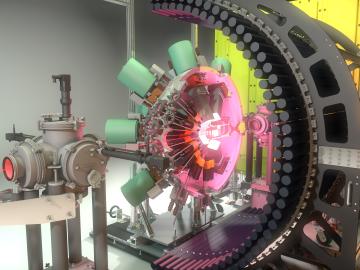
Timothy Gray of ORNL led a study that may have revealed an unexpected change in the shape of an atomic nucleus. The surprise finding could affect our understanding of what holds nuclei together, how protons and neutrons interact and how elements form.
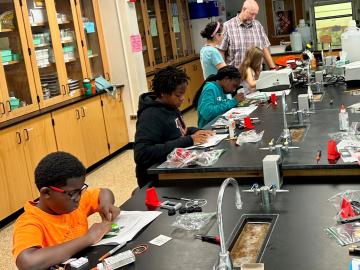
A group at the Department of Energy's Oak Ridge National Laboratory made a difference for local youth through hands-on projects that connected neutron science and engineering intuitively.
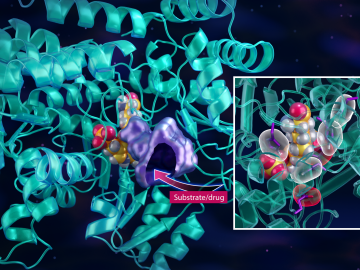
After a highly lauded research campaign that successfully redesigned a hepatitis C drug into one of the leading drug treatments for COVID-19, scientists at ORNL are now turning their drug design approach toward cancer.
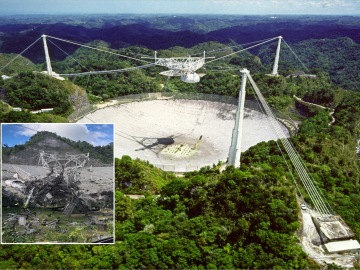
For more than half a century, the 1,000-foot-diameter spherical reflector dish at the Arecibo Observatory in Puerto Rico was the largest radio telescope in the world. Completed in 1963, the dish was built in a natural sinkhole, with the telescope’s feed antenna suspended 500 feet above the dish on a 1.8-million-pound steel platform. Three concrete towers and more than 4 miles of steel cables supported the platform.
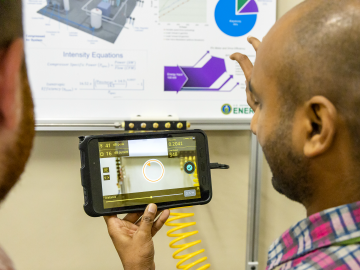
ORNL researchers have developed a training camp to help manufacturing industries reduce energy-related carbon dioxide emissions and improve cost savings.

It was reading about current nuclear discoveries in textbooks that first made Ken Engle want to work at a national lab. It was seeing the real-world impact of the isotopes produced at ORNL
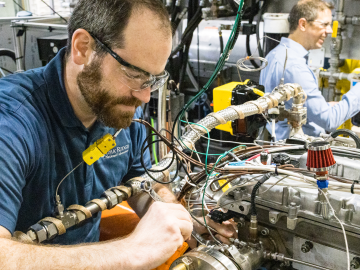
ORNL, the Department of Energy’s largest multidisciplinary laboratory, and Fairbanks Morse Defense, a portfolio company of Arcline Investment Management, have entered into a Memorandum of Understanding to collaborate on the development and integration of alternative fuel technologies aimed at reducing the marine engine’s reliance on fossil fuels.

Eric Myers of ORNL has been named a senior member of the Institute of Electrical and Electronics Engineers, effective June 21.


